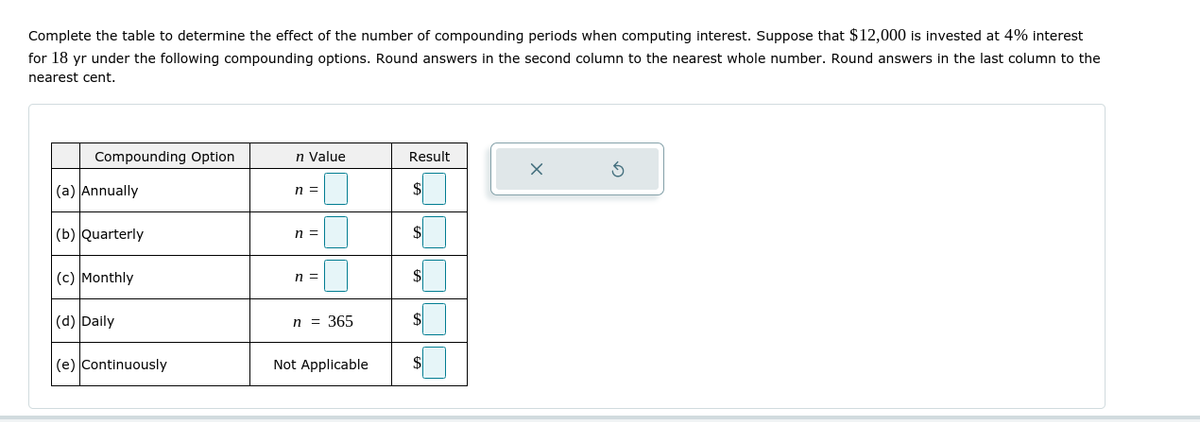Complete the table to determine the effect of the number of compounding periods when computing interest. Suppose that $12,000 is invested at 4% interest for 18 yr under the following compounding options. Round answers in the second column to the nearest whole number. Round answers in the last column to the nearest cent. Compounding Option n Value Result |(a) Annually n = (b) Quarterly n = (c) Monthly n = (d) Daily n = 365 (e) Continuously Not Applicable
Complete the table to determine the effect of the number of compounding periods when computing interest. Suppose that $12,000 is invested at 4% interest for 18 yr under the following compounding options. Round answers in the second column to the nearest whole number. Round answers in the last column to the nearest cent. Compounding Option n Value Result |(a) Annually n = (b) Quarterly n = (c) Monthly n = (d) Daily n = 365 (e) Continuously Not Applicable
Algebra & Trigonometry with Analytic Geometry
13th Edition
ISBN:9781133382119
Author:Swokowski
Publisher:Swokowski
Chapter5: Inverse, Exponential, And Logarithmic Functions
Section5.2: Exponential Functions
Problem 49E
Related questions
Question

Transcribed Image Text:Complete the table to determine the effect of the number of compounding periods when computing interest. Suppose that $12,000 is invested at 4% interest
for 18 yr under the following compounding options. Round answers in the second column to the nearest whole number. Round answers in the last column to the
nearest cent.
Compounding Option
n Value
Result
(a) Annually
n =
(b) Quarterly
n =
(c) Monthly
n =
(d) Daily
n = 365
(e) Continuously
Not Applicable
Expert Solution
This question has been solved!
Explore an expertly crafted, step-by-step solution for a thorough understanding of key concepts.
This is a popular solution!
Trending now
This is a popular solution!
Step by step
Solved in 2 steps with 1 images

Recommended textbooks for you

Algebra & Trigonometry with Analytic Geometry
Algebra
ISBN:
9781133382119
Author:
Swokowski
Publisher:
Cengage

Algebra & Trigonometry with Analytic Geometry
Algebra
ISBN:
9781133382119
Author:
Swokowski
Publisher:
Cengage